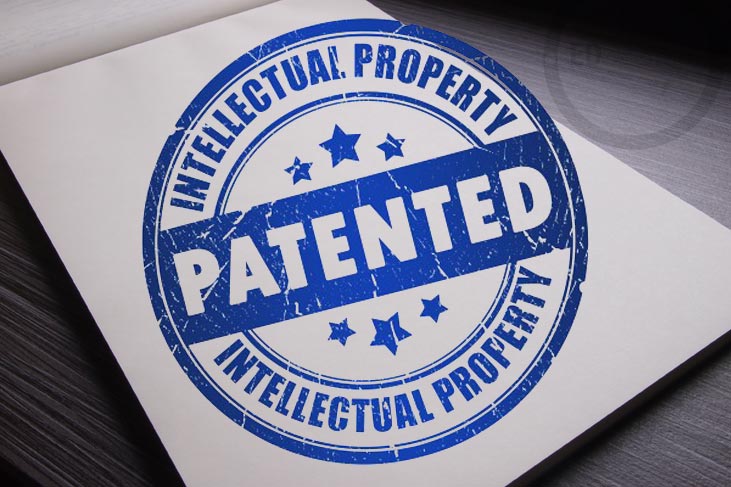Introduction
Section 3(d) of the Indian Patent Act (“Act”) is a unique Section that bars patenting of discovery of a new form of a known substance which does not result in the enhancement of the known efficacy of that substance. There are several judgments which clarify the objections under non-patentability to be raised.
In a very recent judgment by a single bench of the Delhi High Court in the matter of DS Biopharma Limited v. The Controller of Patents and Designs [1], it was held that for the purposes of an objection under Section 3(d), the specific known substance is to be identified and the manner in which the claimed compounds are new forms ought to be mentioned by the Patent Office, at least in a brief manner, if not in detail.
Facts of The Case – DS Biopharma Limited v. The Controller of Patents and Designs [1]
In the present case, the Appellant – DS Biopharma Limited, had filed an Indian patent application 201717040270 titled ‘Compositions comprising 15-oxo-epaor15-oxodgla and methods of making and using same in the Indian Patent Office on November 10, 2017, with a total of 26 claims. A First Examination Report (FER) was issued on March 5, 2020, comprising objections such as lack of inventive step, non-patentability under Section 3(i); and lack of clarity and conciseness under Section 10(5) and Section 10(4)(c) of the Act. The Appellant responded to the FER on July 8, 2020, wherein it cancelled claims 7-26. Thereafter, a hearing notice was issued with the single objection that the subject matter claimed in claims 1 and 4 is not patentable under Section 3(d) of the Act, without any other explanation or details concerning the objection. A period of only 23 days was provided to the Appellant to respond to the objection, i.e., to attend the hearing.
A major concern in this matter was that had the objection been raised in the FER, the Appellant would have been given 6 months (extendable by 3 months) to respond to the objection, as against the mere 23 days provided to the Appellant to respond to the hearing notice. As anticipated, the Appellant could not successfully gather and present reasonable data in support of his arguments within the short time frame, perhaps due to which, the subject application was rejected by the Patent Office vide the impugned order dated January 13, 2021, on the grounds of non-patentability under Section 3(d), lack of inventive step under Section 2(1)(ja) and lack of clarity under Section 10(4)(c) of the Act. Evidently, the latter two objections had not even been stated in the Hearing notice.
Issues before the Court:
- whether the Patent Office merely quoting Section 3(d) for compound claims without identification of known substance from the prior art is sufficient.
- being Section 3(d) peculiar to Indian Patent Act, was the Applicant provided with sufficient time to meet the requirements
- whether an objection under Section 3(d) must be proved to raise an objection in the examination report/office action.
Relevant Rules and/or Law
- What are not inventions: The following are not inventions within the meaning of this Act,-
(d) “the mere discovery of new form of known substances which does not result in enhancement of the known efficacy of that substance or the mere discovery of any new property or new use for a known substances or the mere use of a know process, machine or apparatus unless such known process, machine or apparatus results in a new product or employs at least one new reactant.
Explanation- For the purposes of this clause, salts, esters, ethers, polymorphs, metabolites, pure form, particle size, isomers, mixtures of isomers, complexes, combinations and other derivatives of known substance shall be considered to be the same substance, unless they differ significantly in properties with regard to efficacy;”
Contentions of the Appellant
The Appellant contended that the patent application was rejected on the grounds of non-patentability under Section 3(d), in addition to a lack of inventive step under section 2(1)(ja) and lack of clarity under Section 10(4)(c) of the Act despite the fact that the latter objections had been raised in the FER and successfully contested.
Further, the Appellant contended that the Controller did not specify the part of Section 3(d) under which the objection fall. The Appellant submitted that the Patent Office needs to specifically allege and identify either the specific known substance in question or give the basis to assert that the claimed molecule or substance is a derivative/a new form of a known substance or the basis to assert that efficacy of the alleged known substance and the claimed substance is the same. In the absence of identification of the ‘known’ compound, it is not feasible to respond or defend a patent application. Furthermore, there is no legal obligation under Section 3(d) to demonstrate the efficacy of the claimed compound in the absence of identification of the ‘known’ compound.
Observation and Decision of the Court
The Court observed that the basic precondition for a Section 3(d) objection to be raised is the identification of the known substance. Section 3(d) bars the patentability of a `new form’ of `a known substance’, which does not establish an enhanced therapeutic efficacy. The Court stated that it cannot be left to the Applicant to deduce what is the known substance and thereafter give efficacy data qua that known substance, based on the said deduction. The Patent Office should mention briefly the one specific known substance and the basis on which that compound seems to be the new form of the known compound. In the present case, the hearing notice did not mention such a substance or the basis of the identification of such compounds.
Therefore, the Court held that the Appellant had not had an adequate opportunity to deal with the objection under Section 3(d) in as much as apart from merely specifying the said objection for the first time in the hearing notice, the way said objection was attracted was completely absent. As the Patent Office did not properly identify the known substance in the hearing notice and the Appellant was not provided with a proper opportunity to deal with the objection under Section 3(d), the Court overruled the impugned order.
The Court directed that the Appellant shall file its response as to how Section 3(d) is not applicable based on the identified known substances order along with any relevant efficacy data to support its submissions within a period of 8 weeks. Thereafter, it shall be left to the Controller to decide whether claims 1-4 are liable to be granted based on the outcome of a further hearing.
Analysis and Conclusion
The provision under Section 3(d) of the Indian Patents Act bars patenting of discovery of a new form of a known substance which does not result in the enhancement of the known efficacy of that substance. This implies that any new form of a known substance will be considered the same substance and will not be a patentable subject matter unless it results in a significant enhancement in its efficacy. However, the known substance in this context obviously needs to be identified.
Moreover, Section 3(d) is peculiar to the Indian Patent system, which should afford an Applicant an adequate time and opportunity to deal with the such objection. In the present case, the literal objection in the hearing notice stated, “Subject matter claimed in claim 1,4 is not Patentable u/s/ 3(d) of Patents Act” and no further elaboration as to how and why Section 3(d) is applicable to the objected claims was provided. Therefore, the Applicant could neither be obliged to nor was it feasible for the Applicant to first identify the known substance in question by themselves and then provide comparative efficacy data, especially in such a short duration of time.
Due to the restraining approach of Section 3(d) of the Patents Act, Indian or overseas Applicants assume Section 3(d) as a major restriction to the patentability of their products or process, belonging to the category of a new form of a known substance or a process of preparing a known substance. Thus, they are reluctant to file such patent applications in India. However, we believe that this case law will allow a better opportunity for foreign applications to deal with Section 3(d) because now, the Patent Office cannot raise an objection under Section 3(d) unwarrantedly, or leave it to the Applicant to deduce as to what is the known substance and thereafter give relevant efficacy data in support. Rather, the Examiners at the Indian Patent Office have one more task added (rather re-enforced) to their jobs – to recognize the known compound relevant to claimed compound in order to raise an objection under Section 3(d) of the Indian Patents Act.
In case of any queries or concerns, please write to us on knk@kankrishme.com. We promise to deliver!
[1] C.A. (COMM.IPD-PAT) 6/2021 & I.A. 12828/2021

